We were making a blue print for a post on Khajuraho and that touched 500 words. This is an indication that Khajuraho is not just a tourist spot. It is an experience. What is Khajuraho famous for?
Also read: Why You Must Visit Khajuraho At Least Once In Your Lifetime
Khajuraho, home to one of the top Indian temples to visit, is famous for its temples. We have covered details like How to reach Khajuraho from Delhi, Where to stay in Khajuraho, and, Khajuraho Temples – What makes them special, in our earlier post. Consequently we have been asked questions like Who built the Khajuraho temples? Which God is there in Khajuraho temple? We will answer some of these questions in this post.
Contents
Visit to Khajuraho Temples
The Khajuraho temples were built by kings and other members of the royal family of Chandela dynasty in Bundelkhand. The grand temples are reflection of their religious beliefs, their lifestyle and affluence of those times. The monuments bear testimony to the high level of design and architectural skills and craftsmanship that can only be imagined.
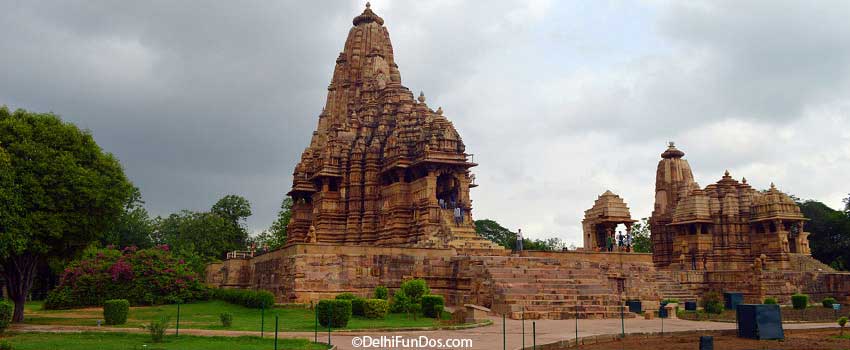
The Khajuraho temple complex apparently had 85 shrines spread over 20 square kilometers. Out of these, only 25 temples have stood the test of time and are spread over 6 km in present day Khajuraho. These temples are loosely classified as Eastern, Western, Southern and Jain group of temples.
Western group of temples
The best preserved temples are in the Western group and hence we started our temple tour from here on day 1. This was about 20 minutes from our resort. Here were a bunch of temples which were built in different periods. The temples differed in size, shape and presiding deity. The following temples are must visits here.
Varah temple
Varah is the Boar incarnation or Avatar of Lord Vishnu. Apparently the temple complex had shrines dedicated to all the ten Avatars but the remaining shrines have been destroyed. The temple was on a high plinth with a pyramid roof. But our jaws dropped when we saw the beautiful monolith Varah statue at least 5 feet high. The sandstone sculpture has stunning figures sculpted all over and a Saraswati image is carved on the snout. The Varah Avatar of Lord Vishnu is generally depicted as a chimera – a boar head with man body. But we could not imagine such a creative depiction of the complete Boar as the Varah Avatar.
Lakshmana Temple – Erotic Sculptures of Khajuraho
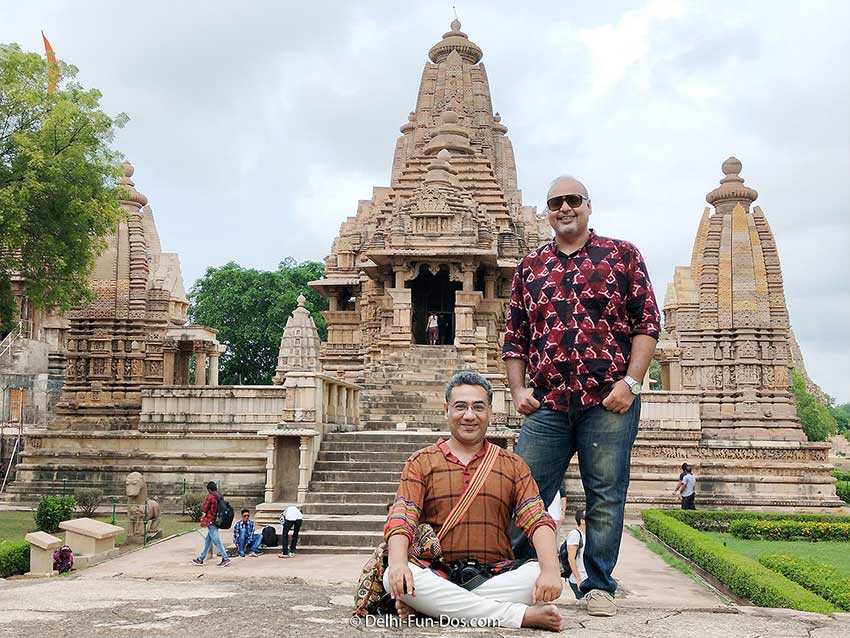
The Lakshmana Temple is an exquisite example of the Panchayatna-style temple architecture. Dedicated to Lord Vishnu, the sanctum sanctorum has an elaborately carved but peaceful statue of Vaikuntha Vishnu. The outer walls are decorated with figures of mythical characters, couples, and animals. The carvings also include the popular series of erotic sculptures of Khajuraho. But as we discussed in our earlier piece, these statues had not been created to titillate. Rather, they stand testimony to love. And also to the openness in our society a thousand years back.
Kandaria Mahadev Temple – Largest Temple of Khajuraho

This is the largest architecture in the Khajuraho group. This temple dedicated to Shiva has many spires to resemble Mountain Kailasha in the Himalayas, the mythical abode of Lord Shiva. The structure has many ornate passages and balconies. Consequently, the sanctum sanctorum is dark and resembles a cave hence the name – “Kandaria”. We were stunned to see the detailed ornamentation on the temples wall. Along with erotic statues, there are many celestial characters we could not recognise. However, we saw many statues of the Fire God Agni on this temple.
Devi Jagadambi Temple
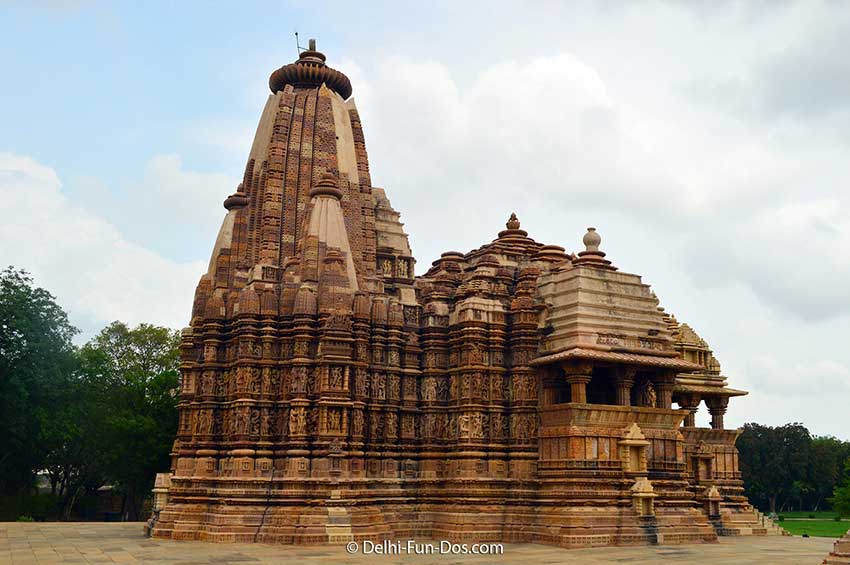
This temple is much smaller that the Kandariya Mahadev Temple. But because of its lower height, most of the beautiful sculptures are easily visible. There is statue of a seated Goddess in the sanctum sanctorum. We could not identify the deity but it resembled our impression of Goddess Lakshmi who is representative of peace and prosperity. This temple is thronged by devotees during Navaratri and formal Pujas or worship is held in these periods. The famed Khajuraho Dance Festival takes place on a pedestal just outside the Jagadambi Temple.
Matangeshwar Temple – Live Temple in Khajuraho

Matangeshwar Temple is dedicated to Lord Shiva. It is a simpler structure than the other temples. Yet, the giant Shiva Linga is extremely ornate with scriptures carved on the body. It is definitely one of the most beautiful Shiva Lingas we have seen. This is the only live Hindu Chandela temple in Khajuraho where active worship takes place every day. To allow free approach to devotees, this temple is separated from the ticketed Western temple complex with a simple wire partition. We are told the festival of Shiva Ratri is celebrated with fervour and gusto at this temple.
It was already about eight hours that we had spent here and things stopped registering. We decided to call it a day and headed back to our resort.
We visited the Eastern, Southern, and Jain temples on our second day of temple tour. Apart from the Western group, there is no entry charge for the other temples in Khajuraho.
Eastern group of temples
We started with the Eastern group of temples on the second day. The Eastern group of temples comprises Hindu as well as Jain temples.
The Hindu temples we visited were the Brahma temple, the Hanuman temple and the Vamana temple. We felt these temples were smaller than the temples in the Western Group. The Brahma temple had a magnificent idol of Brahma. There are not too many Brahma temples in the world. The Hanuman temple had a grand 8 feet statue of Lord Hanuman. But we loved the Vaman temple most. The statue of Vaman or the Dwarf incarnation of Lord Vishnu was a beautiful depiction in all serenity and without making the structure a caricature. In fact, the whole structure had some sort of stunted structure which was so in parity with the Vaman theme.
Beejamandal temple mound
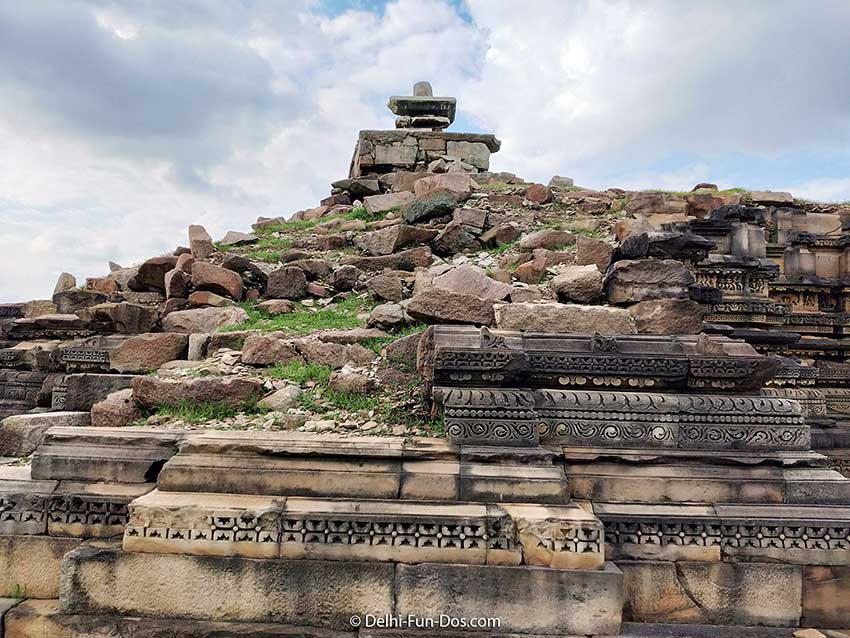
We found a mound of ruined pieces near the eastern temples. This is the Beejmandal Temple that is yet to be fully excavated. It is now an open site with beautiful statues and pillar scattered everywhere. A beautiful Shiva Linga on the top of the mound makes the site extremely photogenic.
Jain Temples

The Jains were a dominant community all across Madhya Pradesh or erstwhile Bundelkhand. Consequently, Jain shrines are found all across the state. We had seen some magnificent Jain sculptures near the Gwalior Fort. The Jain temples in Khajuraho are in the Eastern part of the town. The main difference between the Jain and Hindu temples of Khajuraho is that Jain temples have been live all along and there has been continuous worship from their inception till now. In case of Hindu temples, most of these are now historical monuments and regular worship does not take place.
Parshvanath Temple
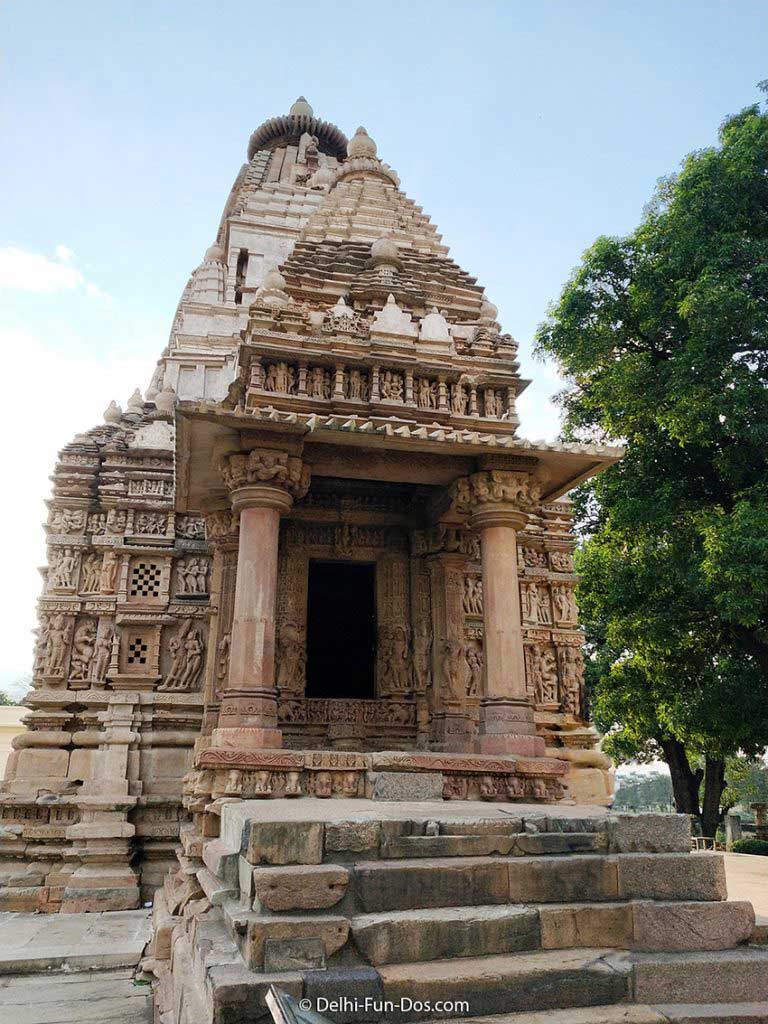
When we approached this temple, all we could see was contemporary cement construction. It was like a Jain hermitage and we were skeptical. But once we entered and went inside, the older Parshvanath Temple stood in full glory. This is the largest Jain temple here and as per inscriptions, this was built by a wealthy Jain family during Chandella reign. This temple has a lot of floral carvings with an exquisite, clean, and shiny black stone idol of Parshvanath in the sanctum sanctorum. A yantra or mystical square in this temple is popular as Chautisa (numeric 34). Apparently each sub-square in this design sums up to the number 34. This temple is almost devoid of erotic statues and is dated back to the 10th Century.
Adinatha Temple
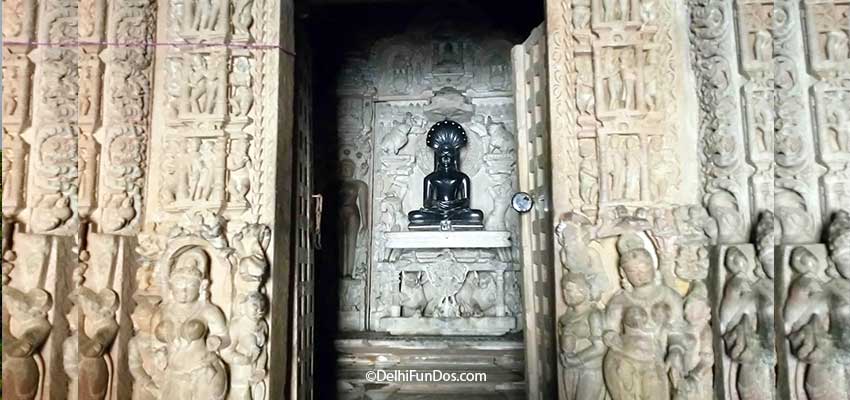
The Adinath Temple dates to the 11th century. It is a slim structure that is ornamented with statues of Hindu deities on the outer wall. A beautiful statue of seated Adinath wearing an elaborate crown also adorns the outer wall.
Shantinath Temple
This is a new temple constructed in the 19th century and is the main centre of Jain worship in Khajuraho. However, the base of the temple is ancient and the sanctum sanctorum has a large standing statue of the Jain Tirthankar Shantinath that dates back to early 11th century.
Ghantai Temple
This temple dedicated to Lord Rishabhnath is dated back to the 11th century. The temple is now in ruins. The only standing structures – some parts of the gate and pillar bear testimony to the grandeur of the temple. The presiding idol of Lord Rishbhanath is now placed at Khajuraho Museum.
Southern Temples
Duladeo Temple
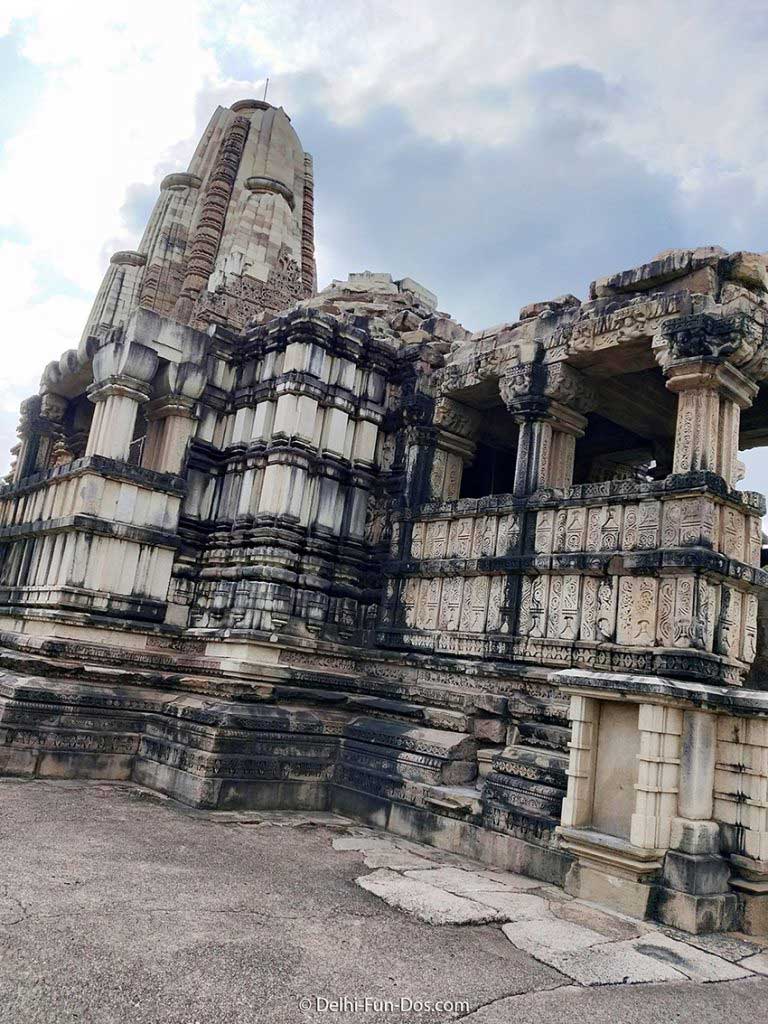
This is gorgeous and best-preserved temple in the southern group of temples. Dedicated to Lord Shiva, this temple conceptualizes him as the “Dulha” or bridegroom. Consequently, the temple has many sculptures on the outer wall that depict copulation. There are other symbols too, such as the mango, depicting fertility. The ornaments on the human figures are elaborate too and there is a sense of festivity in the architecture. The spires of the temple in Nagara style replicate Mountain Kailasha, the abode of Shiva. The Shiva Linga in the sanctorum has been placed later since the original idol is missing. Nonetheless, the Linga is a beautiful work of art with 999 more Lingas carved on it. This temple is among the last temples built by the Chandelas in Khajuraho and is not to be missed.
Light and Sound Show, Khajuraho
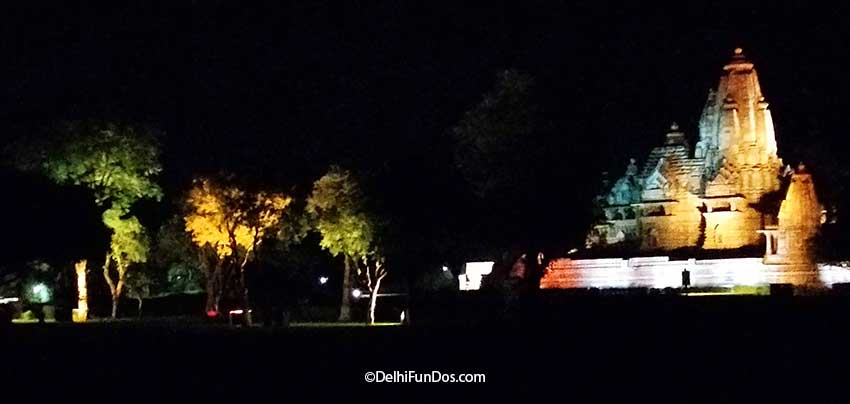
Sound and light shows are held in Hindi and English languages respectively every evening in the Western Group of temples. This show is separately ticketed and lasts about 45 minutes. The temples are illuminated in coloured lights and there is a narration describing the background behind each temple. The temples are far from the audience seats and with the distance and not so powerful lighting; the show does not really leave much impact. Not to mention the bugs and mosquitoes those infest the seating area in the evening. This show is passable.
Pro-tips
Based on our Khajuraho temple experience, the following steps might help to make your experience even better.
– Take a guide, otherwise, you are lost. Plus you miss out on many unique features, statues, and stories connected to the temples.
– Don’t try to do all in one day since it takes a long to finish even a single temple. Each temple is unique in some way so at least have two days on hand for visiting Khajuraho temples.
– Given that it is all outdoors, winters are much better for visiting Khajuraho.
– We are talking about temples and a visitor is expected to often go inside barefoot. Wear shoes that can be removed easily and make your life easier.
– There is a lot to do and it is indeed exhausting. Hence, start early. This way you can make more of the day, you are fresh and energetic, and the sun is not hot.
Pin it for later Read
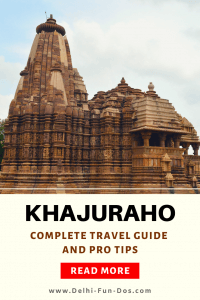

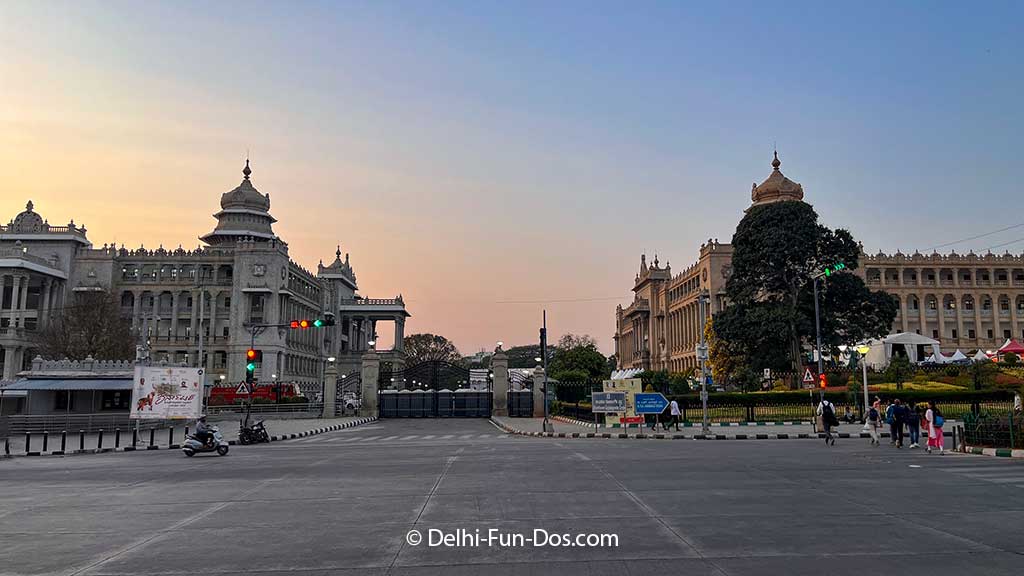
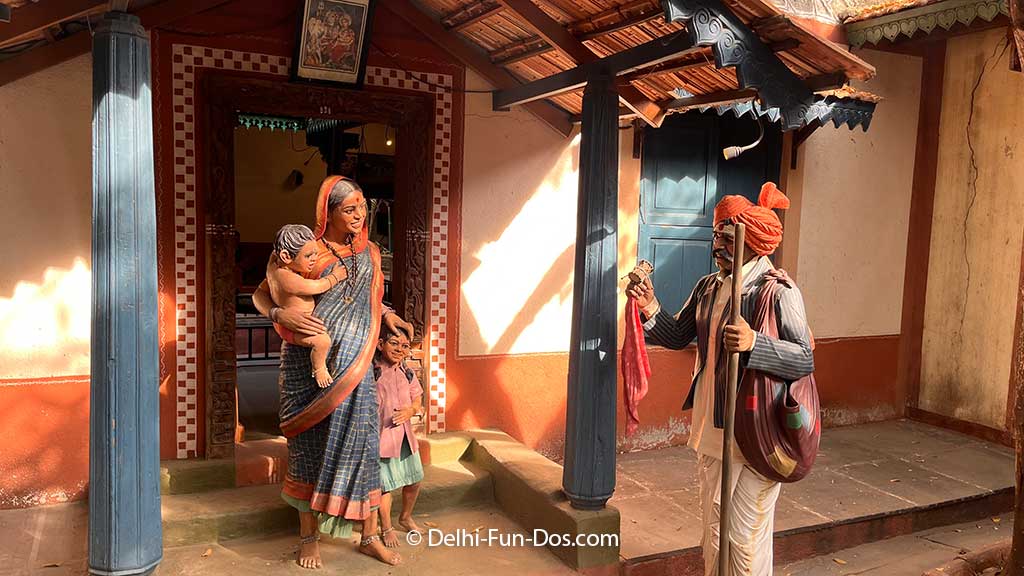
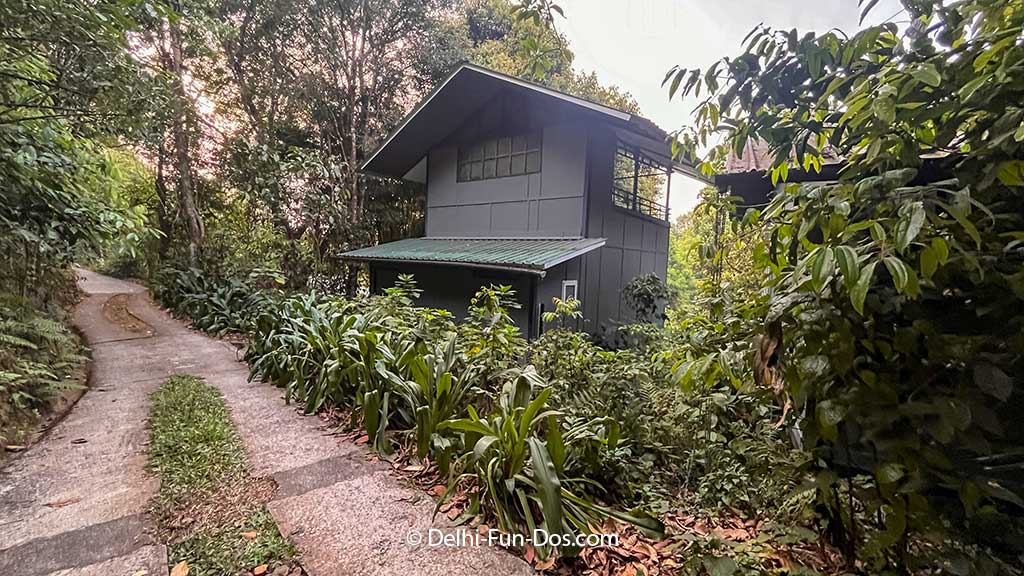
Amazing pics. And amazing history too. Thanks for sharing.
This is a really helpful content and I am definitely bookmarking this because Khajurao is on my travel list! Thanks for sharing.
Tick it off soon we suggest.
Awesome post! In Khajuraho there have many temple’s to visit for sightseeing, it’s very interesting and informative. Thanks for your amazing travel guide and your photos are mind-blowing.
Wow I love these old architectures. They are so lovely and overwhelming especially when you sit to think what all this temple has seen and been through.
Khajuraho temples have been subjected to various aggression too.
Amazing and beautiful post. Khajuraho temple tour is a well-rounded trip of Central India’s most significant heritage sites and erotic sculptures! Great thoughts.
wow wonderful architectures & beautiful place… thanks a lot for sharing your trip pictures & details
I always love travelling to heritages of architectural significance. I have been meaning to visit Khajuraho and this guide will definitely be helpful.
It’s really a amazing place..will definitely go and visit soon .. thanks for sharing
It is one of the most spectacular architectures of India. Ancient temple and i have wanted to visit it. Will follow your blog tips when i go
There’s so much to know about Khajuraho. Have heard about these temples as a word of mouth. Thanks to you who made me know about them in detail.